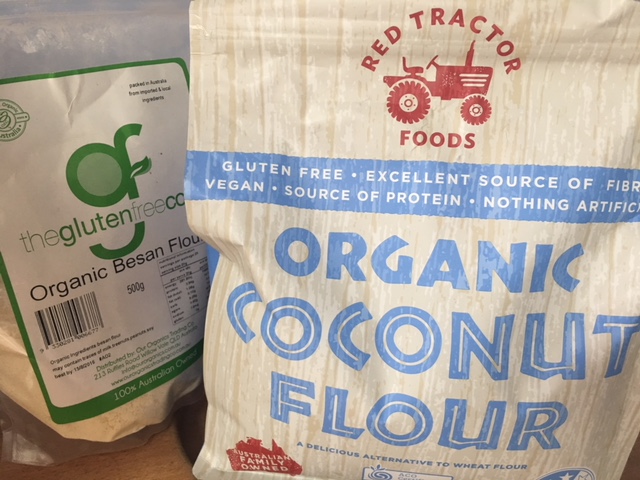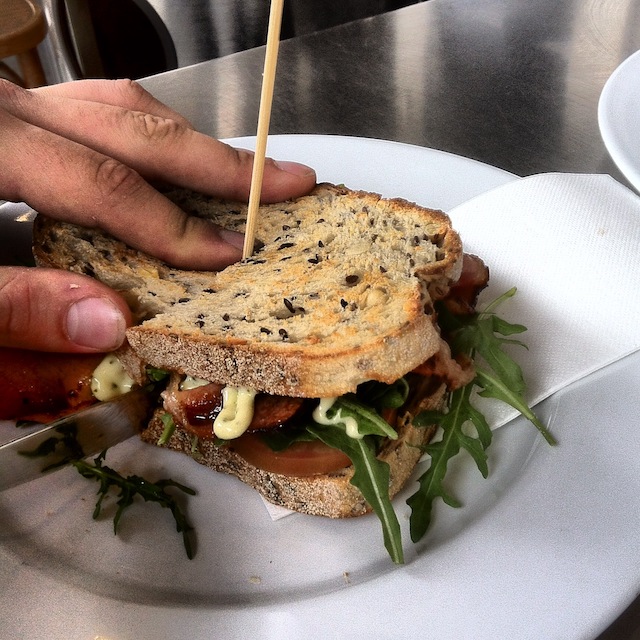- Home
- Blog
- Healthy Eating for Wellness
- 5 healthier alternatives to white flour
5 healthier alternatives to white flour
Written by Catherine Saxelby
on Wednesday, 10 October 2018.
Tagged: carbohydrates, carbs, flour, healthy eating, healthy lifestyle, nutrition, wheat

White flour is highly processed, carbohydrate-dense (think 76 per cent), energy-dense (1540 kilojoules or, 358 Calories per 100 grams) and low in nutrients. And we seem to be addicted to it. Like all addictions, it feeds the pleasure response - think light and airy cakes, fluffy white burger rolls, pancakes and scones with lashings of jam. Is there a better alternative that is palatable and that does the same job? Take a look…
What is white flour?
White flour is made from wheat that has been milled (finely ground) and most of the “good bits” such as the germ and the bran removed so we’re mostly left with the endosperm - the starchy centre of the grain. Most of the fibre and the phytonutrients have been removed. It does contain protein but that protein is mainly gluten - a problem for some people.
Fortified flour
Most white flour in Australia (apart from that labelled “organic”) is required by law to be fortified with folic acid, one of the important B group vitamins. Folic acid is important in foetal development and protects against neural tube defects in newborns. (See my post on folic acid here)
It is also fortified with thiamin (vitamin B1) in an effort to combat marginal deficiencies of this vitamin in the entire population. You can read more about B1 here.
How can we improve flour-containing foods?
There are 5 easy ways we can reduce our intake of white flour.
- Eat foods that contain a mix of flours. Many store-bought breads these days have a mix of flours such as the popular light rye varieties that contain a percentage (around 30 per cent) of rye flour or rye meal but still produce a soft, light loaf. Or those containing soy flour and linseeds.
- Substituting white flour with some wholemeal wheat flour will improve the nutritional profile of your baked goods. While wholemeal flour makes a heavier dough, you can adjust the percentages to add nutrition while not detracting from the taste or texture of the final cake, biscuit, bread or pastry. Around 20 per cent can be substituted with little effect.
- People who are on a lower carb diet often substitute coconut or almond flour for some or all of the white wheat flour in a recipe. When you do this, make sure you adjust the liquids in your recipe as coconut flour absorbs a lot of liquid. Coconut flour is high in fibre (38 per cent), some of which is inulin, a prebiotic fibre that promotes good gut health. You can read more about inulin here.

- Besan, or chickpea, flour has long been used in the sub-continent and is now becoming better known in Australia. as its name suggests, it is made from ground chickpeas and is high in protein and fibre. Substitute 20 per cent of this besan flour for white flour. It is useful in foods like falafels, veggie and meat burgers as well as bread and pastry.

- Up the fibre content of your white flour baked goods by adding psyllium husks. Psyllium is a a source of fibre that helps relieve constipation, reduces cholesterol and reduces blood sugar levels in type 2 diabetes. Most Australians don’t eat enough fibre and so this is an easy way to up your intake.
FODMAPS vs gluten
Some people are sensitive to FODMAPS (Fermentable Oligo-, Di-, Mono-saccharides And Polyols) and others are sensitive to gluten and some poor souls are sensitive to both. To help you make your way through the flour maze, here’s a list of the FODMAP and gluten profiles of some of the more common flours.
|
Flour |
CONTAINS GLUTEN? |
IS HIGH FODMAP? |
|
White |
Yes |
Bread is Low up to 1 slice and High after that. |
|
Wholemeal |
Yes |
Sourdough is Low up to 2 slices and High after that. |
|
Rye |
Yes |
Yes |
|
Almond |
No |
1/2 cup is considered High and 1/4 cup Low. |
|
Coconut |
No |
Yes |
|
Psyllium |
No |
No |
|
Soy |
No |
Yes |
|
Chickpea (Besan) |
No |
Yes |
|
Buckwheat |
No |
No |
|
Rice (brown, white, wild) |
No |
No |
The bottom line
If you want to improve your nutrition then overcoming the love-affair with white flour is a good place to start. Start slowly, if you change your diet to whole grains, or high-fibre foods too quickly you’ll end up with bloating and other problems. Small steps allow your body's microbiome to adjust to the new diet.
Foodwatch
The Good Stuff
The Boring Stuff
© 2025 Foodwatch Australia. All rights reserved
Website by Joomstore eCommerce







